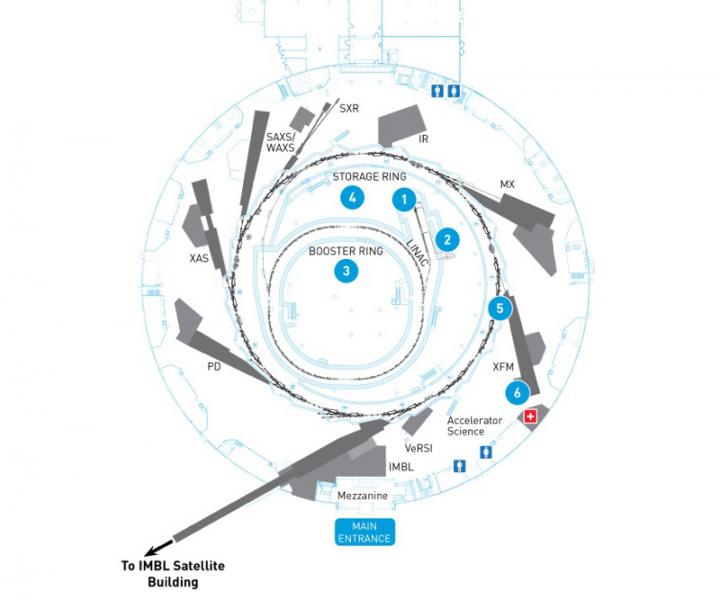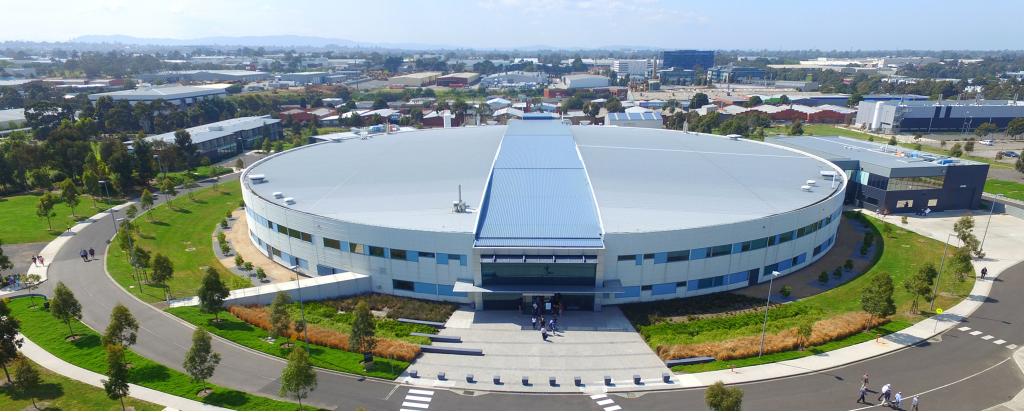

What is synchrotron light?
How is synchrotron light created?
Synchrotrons use electricity to produce intense beams of light more than a million times brighter than the sun. The light is produced when high-energy electrons are forced to travel in a circular orbit inside the synchrotron tunnels by the ‘synchronised’ application of strong magnetic fields..
The electron beam produced by the Australian Synchrotron travels just under the speed of light - about 299,792 kilometres a second. The intense light produced by the electrons is filtered and adjusted to travel into experimental workstations, where light reveals the innermost secrets of materials, from human tissue to plants to metals and more.

Electrons are generated by the electron gun (1) in the centre of the synchrotron and accelerated to 99.9997% of the speed of light by the linear accelerator, or linac (2). The electrons are then transferred to the booster ring (3), where they are increased in energy from 100 MeV to 3,000 MeV (or 3 GeV) in about half a second. They are then transferred to the outer storage ring (4).
The electrons are circulated around the storage ring by a series of magnets separated by straight sections. As the electrons are deflected through the magnetic field created by the magnets, they give off electromagnetic radiation, so that at each bending magnet a beam of synchrotron light is produced. This electromagnetic radiation produced by the synchrotron is emitted in a narrow cone in the forward direction, at a tangent to the electron's orbit.
The Australian Synchrotron is an advanced third-generation design. It uses three different types of light source (bending magnets, multipole wigglers, and undulators) to enable a wide range of advanced experiments and measurements to be carried out.
What makes synchrotron light unique?
Synchrotron light is unique in its intensity and brilliance, and it can be generated across the range of the electromagnetic spectrum: from infrared to visible light to x-rays. The synchrotron light produced at the Australian Synchrotron is as bright as 1 million suns.
Properties of synchrotron light
Synchrotron light has a number of unique properties. These include:
- High brightness: synchrotron light is extremely intense (hundreds of thousands of times more intense than that from conventional x-ray tubes) and highly collimated.
- Wide energy spectrum: synchrotron light is emitted with energies ranging from infrared light to hard x-rays.
- Tunable: it is possible to obtain an intense beam of any selected wavelength.
- Highly polarised: the synchrotron emits highly polarised radiation, which can be linear, circular or elliptical.
- Emitted in very short pulses: pulses emitted are typically less than a nano-second (a billionth of a second), enabling time-resolved studies.